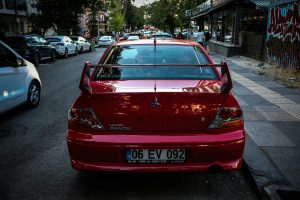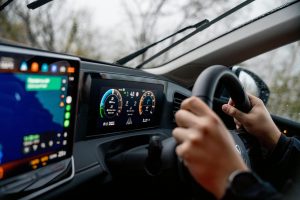The Role of Vehicle Data in Smart City Planning
Smart cities are rapidly emerging as the next big trend in urban planning and management. These cities aim to use technology and data to create more efficient, sustainable, and livable environments for their residents. And one of the key components of a smart city is vehicle data. As the vehicles we drive become increasingly connected and digitized, their data can be leveraged to improve the overall functioning of a city. In this article, we will explore the role of vehicle data in smart city planning and how it is shaping the future of urban mobility.
The Rise of Smart Cities
The concept of smart cities has gained significant momentum in recent years. With the rise of population in urban areas, city planners are facing increasing challenges in managing resources, infrastructure, and services. Smart cities aim to address these challenges by utilizing technology to make cities more efficient, environmentally sustainable, and livable.
Smart city initiatives involve the use of a wide range of data and technologies, such as sensors, Internet of Things (IoT) devices, and artificial intelligence (AI). These technologies generate massive amounts of data, which can be analyzed and used to improve various aspects of city life, including transportation.
The Role of Vehicle Data
Today, vehicles are equipped with a variety of sensors and connected technologies, such as GPS, cameras, and microchips. These systems collect a vast amount of data in real-time, including information about traffic patterns, road conditions, and vehicle performance. This data can be transmitted to city officials, allowing them to gain insights into the functioning of their city’s transportation system.
By analyzing this data, city planners can identify areas for improvement and implement targeted solutions. For example, if a particular road intersection consistently experiences heavy traffic during peak hours, the city can use the data to adjust traffic signals or implement alternate routes. This not only improves the flow of traffic but also reduces carbon emissions and improves air quality.
Improving Public Transportation
Vehicle data also plays a vital role in improving the efficiency of public transportation systems. In many smart cities, public transport vehicles are equipped with GPS and other sensors, allowing operators to monitor their location and status in real-time. This data can be used to optimize routes, improve on-time performance, and enhance the overall experience for commuters.
Moreover, vehicle data can also be used to improve the safety of public transportation. By analyzing data from buses, trains, and other vehicles, city officials can identify potential safety hazards, such as sudden stops or speeding, and take corrective measures to prevent accidents.
Solving Parking Woes
Parking is a persistent problem in most cities, leading to congestion and frustration among drivers. With the help of vehicle data, parking can finally become hassle-free. Smart parking systems use sensors to gather real-time data on available parking spaces in a city. This information is then shared with drivers via a mobile app, allowing them to quickly find and reserve a parking spot, reducing time spent searching for a spot and minimizing traffic congestion.
The Future of Smart City Planning
The use of vehicle data in smart city planning is still in its early stages, but it has immense potential for transforming the way cities function. As vehicles become more advanced and connected, their data can provide valuable insights that can be used to create a seamless, efficient, and sustainable urban environment.
However, it is essential to address concerns about privacy and security when leveraging vehicle data for city planning. Clear regulations and protocols must be in place to ensure the responsible use of this data and protect the privacy of individuals.
Conclusion
In conclusion, vehicle data is playing an increasingly important role in shaping the future of smart cities. By harnessing this data, city planners can optimize transportation networks, improve public transportation, and make parking more convenient. As smart city initiatives continue to evolve, the use of vehicle data will become even more critical in creating livable, sustainable, and efficient cities for the future.










